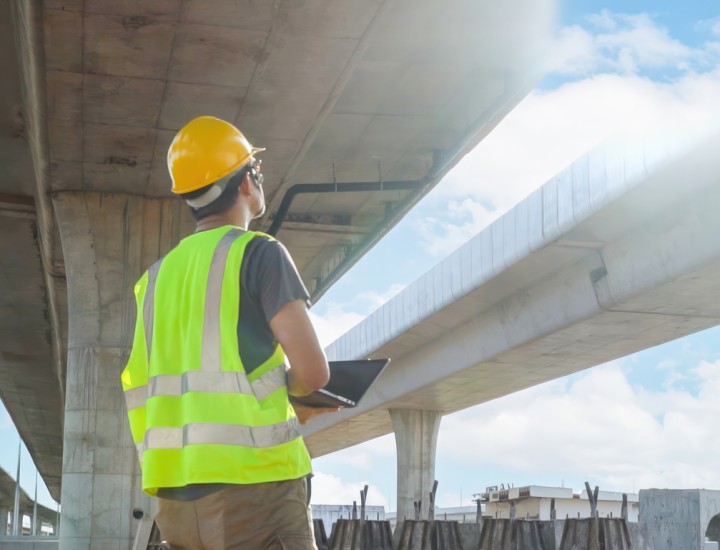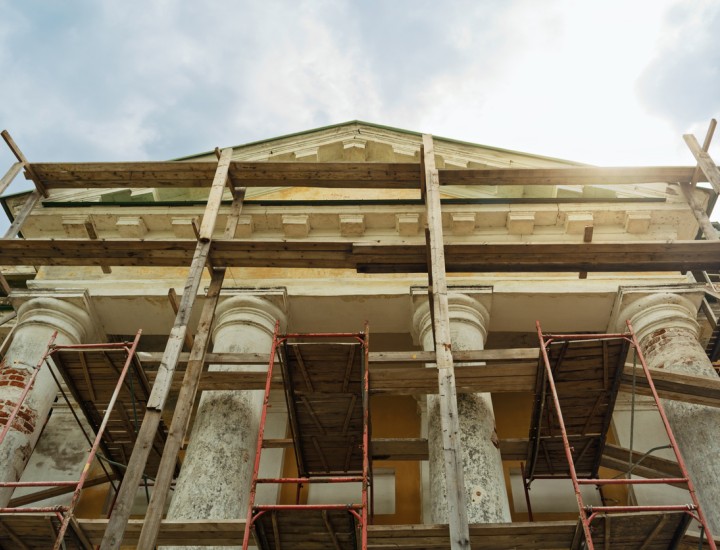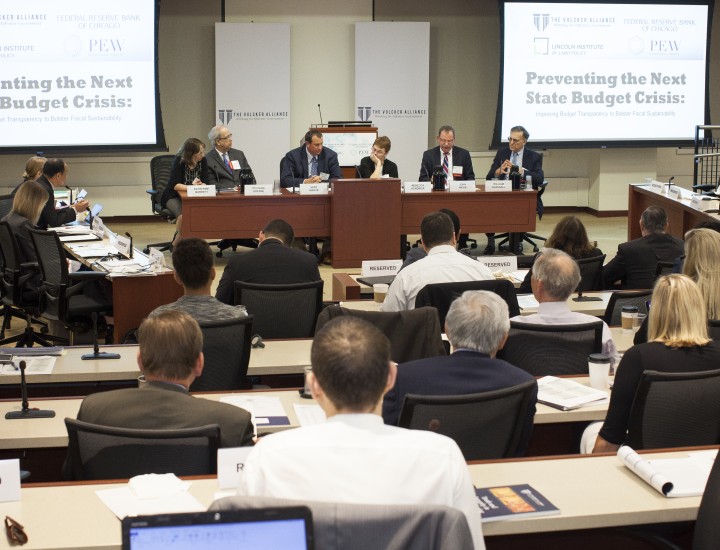Volcker Alliance Reports States May Face ‘Fiscal Cliffs’ After Historic Federal Covid-19 Cash Is Spent
FOR IMMEDIATE RELEASE
Publication Date: May 11
Contact: Vig Tharmarajah, SKDK
Email: [email protected]
Volcker Alliance’s ‘$195 Billion Challenge’ Paper Recommends States Spend Fiscal Relief Fund Windfalls on Infrastructure, Debt Reduction, and Other One-Time Needs
NEW YORK (May 11, 2022) – The Volcker Alliance, a nonpartisan, nonprofit organization, today released a new report – The $195 Billion Challenge: Facing State Fiscal Cliffs after COVID-19 Aid Expires – that examines initial plans for the use of federal COVID aid among the eleven most populous states. Written by public finance professor Beverly S. Bunch, School of Public Management and Policy at the University of Illinois Springfield, the paper also includes recommendations on how states can pursue fiscal sustainability and transparency in their use and reporting of the funds.
“While federal COVID-19 aid provides a historic opportunity to make long-overdue investments in our citizens and communities, equally important is the ability of states and local governments to ensure ongoing spending is accounted and paid for. Every state and municipality should take note of our findings to ensure long-term programs have sustainable funding in place before relief funds run dry and they find themselves on the edge of a fiscal cliff,” said William Glasgall, Senior Director of Public Finance at the Volcker Alliance.
In 2021, Congress provided $350 billion to states and municipalities through the Coronavirus State and Local Fiscal Recovery Funds (SLFRF) to shore up budgets and address the economic and human consequences of the pandemic. Of that amount, states and the District of Columbia received $195.3 billion which must be obligated by the end of 2024 and fully expended before 2027. In some cases, relief dollars equate to more than 25% of a state’s annual general fund expenditures.
In closely examining the initial spending plans of the eleven most populous states in the country, the new report found that three states in particular – California, Pennsylvania and Illinois – face potential fiscal cliffs as they appear to be spending significant amounts of their SLFRF aid on recurring expenditures—i.e., ongoing budget costs that are likely to outlive funding. Other states examined have proposed using the funds largely for one-time investments, such as in water and sewer systems, broadband, infrastructure, and repayment of federal loans to state unemployment trust funds. The Issue Paper explores the long-term financial impact of allocating COVID relief funds to ongoing expenses, such as long-term policy initiatives, instead of one-time costs such as infrastructure projects or debt reduction. According to the paper, “States that use SLFRF for one-time projects are less likely to incur a fiscal cliff than states that devote the dollars to maintaining or expanding services or to creating recurring programs.” Other key findings include:
- Only forty-three percent of the federal support had been allocated as of July 31, 2021. Thirty-five states had allocated half or less of their total SLFRF allotment, and fifteen of those had not allocated for anything other than administrative costs.
- Across all states, the expenditure categories with the largest allocations were revenue replacement (31%); offsetting negative economic impacts (28%); investments in water, sewer, and broadband infrastructure (17%); and services to disproportionately impacted communities (15%). Compared to other states, the largest ones assigned more funds to revenue replacement (35% versus 26%) and services for disproportionally impacted communities (21% versus 8%).
- Seventeen states are using a portion of their SLFRF to fund water or wastewater projects, and eighteen earmarked the funds for broadband. Four of the nine largest states for which information is available – including California, Georgia, and New Jersey – have allocated at least 30% of their planned use of SLFRF to infrastructure or capital projects.
- Fourteen states indicated that they plan to use a portion of the SLFRF money to rebuild unemployment trust funds, either by repaying federal loans or replenishing trust fund reserves. Of the states that had allocated at least one-third of their SLFRF as of July 31, 2021, five had assigned 30% or more of the funds for this purpose, including two of the most populous states: Texas ($7.2 billion) and Ohio ($1.5 billion).
- Nineteen states plan to allocate funds to revenue replacement. Twelve states are allocating at least one-third of their SLFRF for that purpose—Pennsylvania and Wyoming allocated 100% to that category. Meanwhile, California, Pennsylvania, and Illinois allotted significant portions of their SLFRF receipts into state general funds.
The report examines states’ spending plans through the lens of sustainability and transparency standards set out in the Volcker Alliance’s annual Truth and Integrity in State Budgeting evaluations. Preliminary filings surface wide-ranging inconsistencies and lack transparency, limiting the ability of decision makers, researchers, and the public to assess implications of SLFRF spending. The report concludes with recommendations on how states can avoid fiscal cliffs as well as bolster disclosure practices for allocating and using SLFRF resources to improve transparency.
About The Volcker Alliance
The Volcker Alliance is a nonprofit organization founded by former Federal Reserve Board chairman Paul A. Volcker dedicated to advancing his vision of an empowered public sector workforce. The Volcker Alliance’s work supports current and aspiring public servants by strengthening public service education, championing public service values, and providing strategies to help them deliver better results.
Visit volckeralliance.org to learn more. Follow the Alliance on social media @VolckerAlliance and subscribe to the Volcker Alliance newsletter for the latest news and developments. The Volcker Alliance is a 501(c)(3) organization.
###


